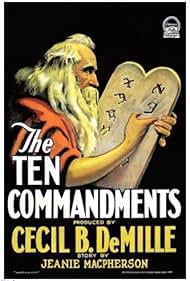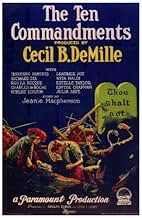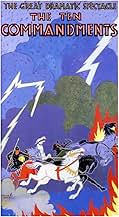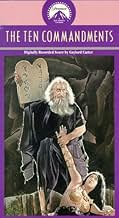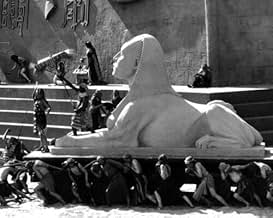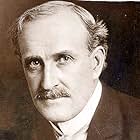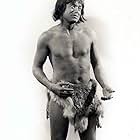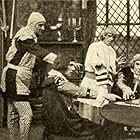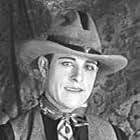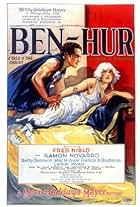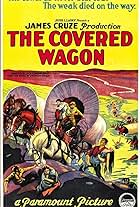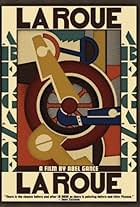IMDb RATING
6.8/10
2.7K
YOUR RATING
After hearing the story of Moses, the sons of a devout Christian mother go their own ways, and the atheist brother's breaking of the Ten Commandments leads to tragedy.After hearing the story of Moses, the sons of a devout Christian mother go their own ways, and the atheist brother's breaking of the Ten Commandments leads to tragedy.After hearing the story of Moses, the sons of a devout Christian mother go their own ways, and the atheist brother's breaking of the Ten Commandments leads to tragedy.
- Awards
- 2 wins & 1 nomination
Charles de Rochefort
- Rameses the Magnificent - Prologue
- (as Charles De Roche)
Pat Moore
- The Son of Pharaoh - Prologue
- (as Terrence Moore)
Leon Beaumon
- Egyptian Calvaryman
- (uncredited)
- Director
- Writer
- All cast & crew
- Production, box office & more at IMDbPro
Storyline
Did you know
- TriviaThe enormous sets of ancient Egypt have become a Hollywood legend in themselves. The "City of the Pharaohs" was constructed of wood and plaster in the Guadalupe Dunes, an 18-mile stretch of coastal sand 170 miles north of L.A. The sets featured four 35-foot-tall statues of the Pharaoh Ramses, 21 five-ton sphinxes, and city walls over 120 feet high. An army of 2,500 actors, extras, carpenters, plasterers, painters, cooks, staff, and film crew members inhabited the set for three months, housed in a virtual army camp that featured nearly 1,000 tents. (3,500 animals, used in recreating the scenes of ancient Egypt, were housed in a huge corral downwind of the camp.) When shooting wrapped, Cecil B. DeMille simply had the massive Egyptian city sets bulldozed, and buried in a huge pit beneath the sand, where they remain to this day. For years, the legendary "Lost City of DeMille" was spoken of by locals in Guadalupe who had worked on the film set. Artifacts from the Egyptian sets were found in the dunes, and can sometimes be found in local houses in the area. (DeMille even said in his autobiography, "If 1,000 years from now, archaeologists happen to dig beneath the sands of Guadalupe, I hope that they will not rush into print with the amazing news that Egyptian civilization extended all the way to the Pacific Coast of North America.") In 1983, documentary filmmaker Peter Brosnan located the remains of the DeMille sets, still buried beneath the dunes. The site is now recognized as an official archaeological site by the state of California, and it is against the law to remove artifacts from the site. Brosnan has been trying for many years to raise money from the Hollywood studios to excavate the site, but so far has been unable to do so.
- GoofsThe type of staff used by Moses and his followers has a Star of David on the end. The Star of David didn't become a symbol of Judaism until the Middle Ages.
- Quotes
Mary Leigh: I was passing by Dugan's lunch wagon when a hot dog ran out and bit me.
- ConnectionsEdited into Forgotten Commandments (1932)
Featured review
Oops, broke that one. All joking aside, this film is incredible. Astonishing effects for the early 20s, where you couldn't twist any digital domain to your whims. The parting of the Red Sea is pretty convincing, even if was Jello. (Can you imagine wading through Jello? Ick.)
This film is told in two parts, as we get to see Moses receiving the Ten Commandments from God in what looks like a Fourth of July celebration. One with good fireworks. Most people know that story--Moses goes to deliver the Commandments, only to find everyone involved in a massive orgy. Here de Mille is in his element. He did so many massive orgies that he should have copyrighted them. We see people making out (not having sex--that would be wrong), men licking wine off women's feet (that is wrong, by gum), and a huge number of people trying to climb up what looks like a curtain. Why they're doing this only de Mille knows. All we need is Gloria Swanson being pawed by a tiger to make everything perfect. As some viewers may not know, de Mille can show whatever sin and debauchery he wants, because the sinners are going to get it in the end. They're gonna get it bad. From the giddy Israelites and their golden calf we're transported to the modern day (1923), where a woman reads the Bible. She can't be the sinner. A son stands nearby, looking very noble and content. Can't be him. Then, we see the other son. He looks bored and disbelieving. We have a sinner! Oh, and he's a bad one. He dances on Sunday, he steals women from their intendeds, he's involved in dozens of dirty dealings, and he's dating an Oriental leper. Beg pardon? I guess she's just thrown in for fun.
Of course, all's well that ends well, and everything turns out okay. This movie is silent, so the acting is a bit in-your-face, and the characters are extreme, but hey. It's necessary--literacy wasn't rampant back then, so filmmakers had to make everything painfully obvious. Some people weren't able to read the title cards, and they'd be lost without the silent films' distinctive pantomime.
Side benefit--the version I have on video features a nifty soundtrack by that powerhouse of the movie palace, the Wurlitzer organ.
This film is told in two parts, as we get to see Moses receiving the Ten Commandments from God in what looks like a Fourth of July celebration. One with good fireworks. Most people know that story--Moses goes to deliver the Commandments, only to find everyone involved in a massive orgy. Here de Mille is in his element. He did so many massive orgies that he should have copyrighted them. We see people making out (not having sex--that would be wrong), men licking wine off women's feet (that is wrong, by gum), and a huge number of people trying to climb up what looks like a curtain. Why they're doing this only de Mille knows. All we need is Gloria Swanson being pawed by a tiger to make everything perfect. As some viewers may not know, de Mille can show whatever sin and debauchery he wants, because the sinners are going to get it in the end. They're gonna get it bad. From the giddy Israelites and their golden calf we're transported to the modern day (1923), where a woman reads the Bible. She can't be the sinner. A son stands nearby, looking very noble and content. Can't be him. Then, we see the other son. He looks bored and disbelieving. We have a sinner! Oh, and he's a bad one. He dances on Sunday, he steals women from their intendeds, he's involved in dozens of dirty dealings, and he's dating an Oriental leper. Beg pardon? I guess she's just thrown in for fun.
Of course, all's well that ends well, and everything turns out okay. This movie is silent, so the acting is a bit in-your-face, and the characters are extreme, but hey. It's necessary--literacy wasn't rampant back then, so filmmakers had to make everything painfully obvious. Some people weren't able to read the title cards, and they'd be lost without the silent films' distinctive pantomime.
Side benefit--the version I have on video features a nifty soundtrack by that powerhouse of the movie palace, the Wurlitzer organ.
- sadie_thompson
- Oct 21, 2003
- Permalink
- How long is The Ten Commandments?Powered by Alexa
Details
Box office
- Budget
- $1,475,837 (estimated)
- Runtime2 hours 16 minutes
- Color
- Sound mix
- Aspect ratio
- 1.33 : 1
Contribute to this page
Suggest an edit or add missing content

